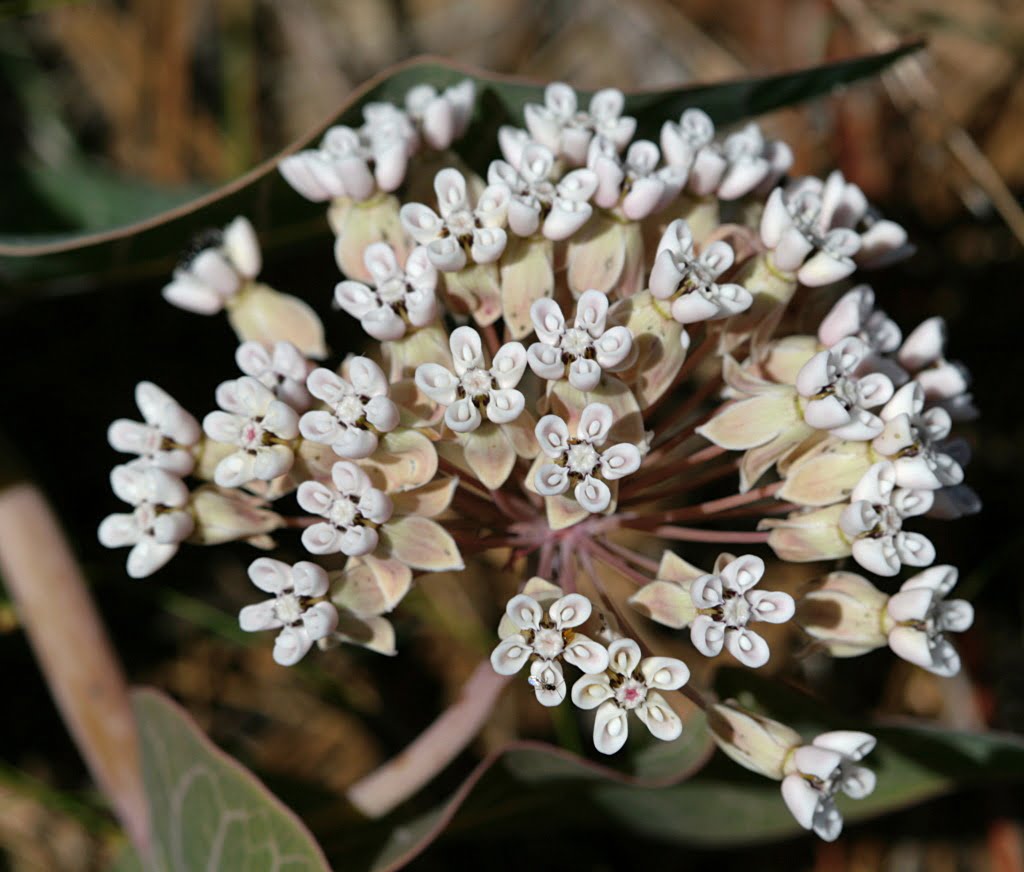Texas is home to a rich diversity of butterfly species, and numerous native plants serve as larval host plants for these butterflies. Here are some of the most important butterfly larval host plants in Texas:
1. Milkweed (Asclepias spp.): Milkweed is a critical host plant for several butterfly species, including the iconic Monarch (Danaus plexippus) butterfly. Texas serves as a crucial breeding ground and migratory pathway for Monarchs, and various milkweed species, such as Common Milkweed (Asclepias syriaca) and Butterfly Milkweed (Asclepias tuberosa), are essential for their caterpillars.

20 Florida-Native Sandhill Milkweed Seeds Ascslepias Humistrata Pinewood Milkweed
With Johnny Butterflyseed’s Sandhill Milkweed seeds, you’re not just planting flowers; you’re cultivating a living mosaic of nature’s marvels. Florida Native.
2. Passionflowers (Passiflora spp.): Passionflowers are host plants for several butterfly species, including the Gulf Fritillary (Agraulis vanillae). Different passionflower species, such as Purple Passionflower (Passiflora incarnata) and Yellow Passionflower (Passiflora lutea), are utilized by these butterflies for egg-laying and caterpillar development.
3. Rue (Ruta spp.): The Giant Swallowtail (Papilio cresphontes) butterfly depends on plants from the Rue family as its primary host. Rue species, including the Common Rue (Ruta graveolens), provide essential food for Giant Swallowtail caterpillars.
4. Senna (Senna spp.): Several species of butterflies, including the Cloudless Sulphur (Phoebis sennae) and Sleepy Orange (Eurema nicippe), use Senna plants as their primary host. Senna species, such as the Sicklepod (Senna obtusifolia) and the Candlestick Cassia (Senna alata), are commonly found in Texas and support these butterfly populations.
5. Hackberry (Celtis spp.): Hackberry trees serve as larval host plants for various butterflies, including the Hackberry Emperor (Asterocampa celtis) and the Tawny Emperor (Asterocampa clyton). Different Celtis species, such as the Sugarberry (Celtis laevigata) and the Texas Hackberry (Celtis ehrenbergiana), are utilized by these butterflies.
6. Wildflowers: Texas is known for its vast wildflower populations, and many native wildflowers serve as host plants for butterflies. Examples include the Bluebonnets (Lupinus spp.), which host the larvae of the Orange Sulphur (Colias eurytheme) and the Reakirt’s Blue (Hemiargus isola), and the Indian Blanket (Gaillardia pulchella), which supports the Bordered Patch (Chlosyne lacinia).
These are just a few examples of the important butterfly larval host plants in Texas. The conservation and preservation of these native plants are crucial for supporting butterfly populations and maintaining the overall biodiversity of the state… one day at a time!

The Adventures of Johnny Butterflyseed – Author Signed First Edition Children’s Book
Save the monarchs!
Johnny Butterflyseed and his fairy friend, Raven Silverwing, embark on a mission to save the rapidly disappearing butterflies. They enlist the help of Queen Venus Goldwing and her kingdom of monarchs to educate and inspire kids to become butterfly farmers. At first, Johnny faces his own internal struggle with self-doubt and fear in his ability to make a difference, but then soon develops a mindset that allows him to not only get started, but also make progress one day at a time. Through challenge after challenge, Johnny learns that he is not alone in his mission and that there are many people who want to help. Together, Johnny, Raven, and Queen Venus educate thousands of children on becoming butterfly farmers.
